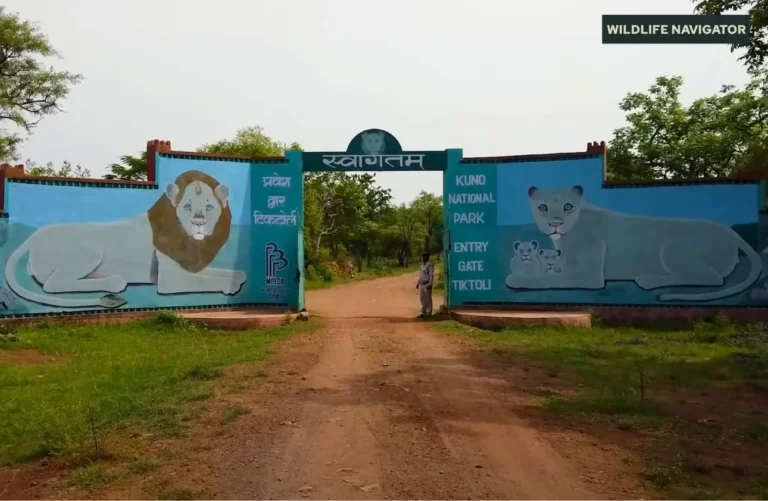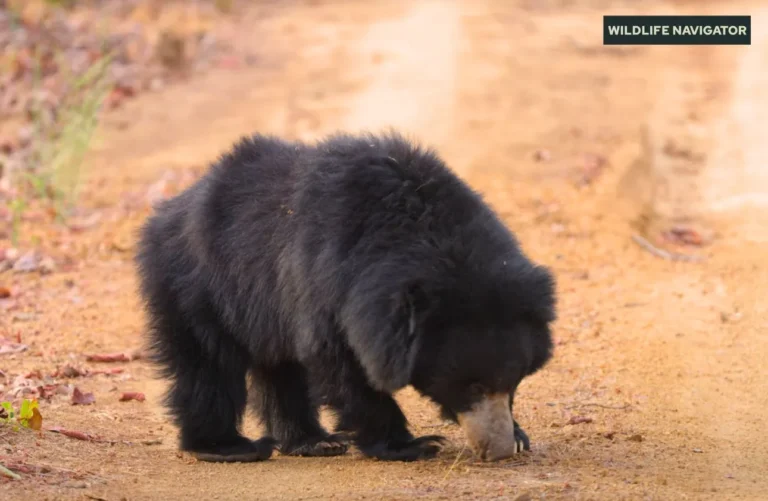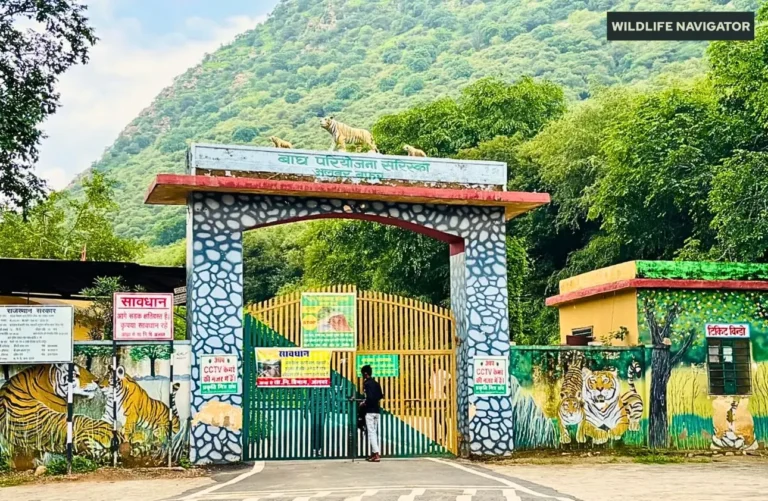Namdapha National Park & Tiger Reserve

Namdapha National Park, located in the northeastern state of Arunachal Pradesh, is one of India’s most pristine and biologically diverse protected areas. Spanning over 1,985 square kilometres, it is the largest protected area in Arunachal Pradesh and is part of the Eastern Himalaya biodiversity hotspot. Namdapha is renowned for its rich mix of tropical, subtropical, temperate, and alpine ecosystems, ranging from dense tropical rainforests at lower elevations to snow-capped alpine zones in the north.
The park is particularly famous as a Tiger Reserve, being part of India’s Project Tiger program, but it is also a haven for other rare and endangered species, including the snow leopard, clouded leopard, red panda, and Hoolock gibbon. Its exceptional biodiversity has earned it recognition under UNESCO’s World Heritage Tentative List and as a globally important site for conservation.
Visitors and wildlife enthusiasts are drawn to Namdapha for its undisturbed landscapes, wildlife sightings, and trekking opportunities. The park is not just a hotspot for tigers but also a stronghold for unique flora and fauna, making it a paradise for nature photographers, birdwatchers, and ecotourists. With its combination of wilderness, rich culture of indigenous tribes, and incredible biodiversity, Namdapha National Park offers a truly immersive experience in the heart of the Eastern Himalayas.
Namdapha Tiger Reserve
Namdapha Tiger Reserve, officially part of the Project Tiger program since 1984, is one of India’s most important tiger habitats. The park’s dense forests and rugged terrain provide an ideal environment for the Bengal tiger, offering ample prey like sambar, barking deer, and wild boar. While tiger population data is challenging to confirm due to the park’s remote and inaccessible areas, sightings and camera trap studies indicate a healthy and stable tiger presence, making Namdapha a crucial stronghold for tiger conservation in the Eastern Himalayas.
Apart from tigers, Namdapha supports a variety of other carnivores. These include the leopard, clouded leopard, marbled cat, Asiatic wild dog (dhole), and snow leopard at higher elevations. The park is also home to smaller predators like civets and mongooses, which play an important role in maintaining ecological balance.
Major tiger sightings are most common in the lower and mid-elevation forests, particularly along river valleys and open grasslands where prey is abundant. For wildlife photographers, early morning and late afternoon are the best times for spotting tigers, especially near water sources. Using long telephoto lenses, silent shutters, and camouflage techniques greatly improves the chances of capturing these elusive big cats without disturbing their natural behaviour.
Namdapha Tiger Reserve not only contributes significantly to tiger conservation in India but also serves as a vital ecological corridor connecting other protected areas in Arunachal Pradesh and neighbouring regions, ensuring genetic diversity and long-term survival of tiger populations.
History, Geography & Landscape
Namdapha National Park was established in 1983, although the area was recognised for its ecological importance much earlier due to its rich biodiversity and unique wildlife. The park was created to protect endangered species like tigers, elephants, and the elusive snow leopard, as well as the diverse habitats ranging from tropical rainforests to alpine meadows. In 1984, it was also designated as a Tiger Reserve, emphasising its critical role in India’s conservation efforts under Project Tiger.
Geographically, Namdapha covers a vast altitudinal range, from around 200 meters in the lowland tropical forests to over 4,500 meters in the high alpine zones. This variation in elevation creates a mosaic of habitats, including dense tropical evergreen forests, temperate broadleaf forests, bamboo groves, and alpine scrublands. Numerous rivers and streams, including tributaries of the Noa Dihing and other smaller rivers, crisscross the park, supporting freshwater ecosystems and enriching the region’s biodiversity.
The terrain is predominantly hilly and rugged, with steep valleys, cliffs, and plateaus. The park experiences a monsoon-influenced climate, with heavy rainfall from May to September, mild winters, and warm summers. Seasonal variations influence both wildlife behaviour and vegetation patterns, making each visit a distinct experience. This combination of rich topography, diverse climates, and pristine forests contributes to Namdapha’s status as one of India’s most ecologically significant and visually stunning national parks.
Flora and Fauna of Namdapha National Park
Namdapha National Park is a biodiversity hotspot, boasting a remarkable variety of flora and fauna due to its wide altitudinal range and diverse ecosystems. From tropical lowland forests to alpine meadows, the park supports over 1,000 species of plants and numerous rare and endangered animals.
Flora
The park’s vegetation is incredibly diverse:
- Tropical evergreen and semi-evergreen forests: Teak, Champa, Bamboo groves
- Temperate broadleaf forests: Oaks, Maples, Rhododendrons
- Alpine scrub and meadows: Junipers, Primulas, Medicinal herbs
- Notable rare plants: Blue poppy, Gastrodia elata (medicinal orchid)
Mammals
Namdapha is home to many flagship and rare mammals:
- Bengal tiger
- Clouded leopard
- Snow leopard
- Red panda
- Asiatic elephant
- Gaur (Indian bison)
- Himalayan black bear
- Hoolock gibbon
Birds
With over 500 bird species, Namdapha is a paradise for birdwatchers:
- White-bellied heron
- Great hornbill
- Rufous-necked hornbill
- Wren-babblers
- Blyth’s tragopan
- Oriental pied hornbill
Reptiles & Amphibians
The park also supports a diverse range of reptiles and amphibians:
- King cobra
- Indian rock python
- Monitor lizards
- Various gecko and skink species
- Himalayan newts and tree frogs
Key Features
- The combination of dense forests, rivers, and open meadows supports both prey and predator species.
- Many animals are endangered or vulnerable, making Namdapha crucial for conservation.
- Seasonal changes bring unique flora blooms and animal behaviour, enhancing wildlife viewing experiences.
Namdapha’s rich biodiversity makes it not just a tiger reserve but a sanctuary for a wide spectrum of Himalayan and Indo-Burmese species.
Safari Experience, Entry Fees & Park Zones
Namdapha National Park offers unique safari experiences that allow visitors to explore its dense forests, rivers, and alpine landscapes. Safaris are primarily conducted through jeeps, guided trekking, and boat rides along rivers in certain areas. The park is divided into several zones to ensure both visitor safety and wildlife protection. Key zones include:
- Tiger Zones – areas with higher tiger sightings, usually along river valleys and open meadows.
- Birding Zones – lowland forests and bamboo groves are ideal for spotting hornbills, wren-babblers, and migratory birds.
- Highland Zones – temperate and alpine forests for observing red pandas, clouded leopards, and Himalayan flora.
Entry Fees (Namdapha National Park)
For Indians:
- Adult (above 12 years): ₹100 per day
- Children (5–12 years): ₹50 per day
- Camera charge: ₹50 per camera
For Foreigners:
- Adult: ₹500 per day
- Children: ₹250 per day
- Camera charge: ₹200 per camera
Other Notes:
- Entry fees are payable at park gates or through official forest offices.
- Safaris and guided treks require advance booking, either via the Arunachal Pradesh Forest Department or registered tour operators.
- Visitors are encouraged to hire local guides for enhanced wildlife spotting and safety.
Namdapha’s safari experience is ideal for photographers, birdwatchers, and wildlife enthusiasts, offering a chance to explore remote areas while minimising human disturbance to wildlife.
Best Time to Visit Namdapha National Park
Namdapha National Park is accessible and enjoyable throughout the year, but seasonal variations greatly affect wildlife sightings, trekking conditions, and overall experience.
Summer (March to May)
- Weather: Pleasant, with temperatures ranging from 15°C to 25°C in lower areas.
- Wildlife Activity: Tigers and elephants are often seen in river valleys and open meadows; birds are highly active.
- Advantages: Ideal for trekking and jungle exploration; flowers bloom abundantly in alpine zones.
Monsoon (June to September)
- Weather: Heavy rainfall, especially in tropical forest areas; risk of landslides in hilly terrain.
- Wildlife Activity: Dense foliage makes animal spotting difficult; streams and waterfalls are at their peak.
- Consideration: Many trekking trails may be closed; some areas can become inaccessible due to rain.
Winter (October to February)
- Weather: Cooler temperatures ranging from 5°C to 20°C; snow may appear in higher altitudes.
- Wildlife Activity: Animals are easier to spot near water sources and lower forests; migratory birds are abundant.
- Advantages: Clear skies, comfortable trekking, and excellent photography opportunities.
Tip: For the best combination of wildlife sightings and accessibility, the post-monsoon (October–November) and early summer (March–May) months are ideal. Early morning and late afternoon are generally the most active times for spotting tigers, elephants, and other mammals.
Namdapha’s diverse climate ensures that each season offers a unique experience, from lush green monsoon forests to snowy alpine landscapes, making it a rewarding destination for nature lovers year-round.
How to Reach & Getting Around
Namdapha National Park is located in the Changlang district of Arunachal Pradesh, in India’s northeastern region. Due to its remote location, reaching the park requires careful planning, but the journey offers scenic views of rivers, forests, and mountains.
By Air
- The nearest airport is Dibrugarh Airport (Mohanbari Airport) in Assam, approximately 160 km from Miao, the main entry town for Namdapha.
- From the airport, taxis or pre-arranged transport can take visitors to Miao.
By Rail
- The nearest railway station is Tinsukia Junction in Assam, around 150 km away.
- Trains connect Tinsukia to major cities like Guwahati, Kolkata, and Delhi. From the station, one can hire taxis or shared cabs to reach the park.
By Road
- Well-connected roads link Namdapha with Miao, Tezu, and Tinsukia.
- Buses and shared cabs are available from nearby towns, but private taxis or forest department vehicles are recommended for convenience and safety.
Getting Around the Park
- Inside Namdapha, authorised park vehicles (jeeps or canters) and guided treks are the primary ways to explore the forest.
- Local guides and naturalists are highly recommended, as they provide wildlife spotting tips, navigation through dense forests, and cultural insights from nearby tribal communities.
- Certain areas may require trekking due to rugged terrain, so visitors should be prepared for moderate to challenging hikes.
Navigating Namdapha can be adventurous, but the combination of forest drives, treks, and river trails allows visitors to experience the park’s pristine ecosystems while ensuring minimal disturbance to wildlife.
Accommodation, Dining & Stay Options
Namdapha National Park, being in a remote and ecologically sensitive area, offers limited but comfortable accommodation options. Staying near the park allows visitors to experience early morning wildlife activity, sunrise treks, and easier access to safari zones.
Government Forest Lodges
The Arunachal Pradesh Forest Department operates lodges in Miao and park-adjacent areas, providing basic amenities such as clean rooms, attached bathrooms, and guided tours. These lodges are ideal for travellers seeking affordable, safe, and convenient stays. Booking is usually done through the forest department office or official website.
Eco-Camps and Guesthouses
For a more immersive nature experience, several eco-camps and homestays are available near Miao and other entry points. These camps are run by local communities, offering tents or cottages surrounded by forests, often with meals made from locally sourced ingredients. Staying here not only supports eco-tourism but also provides an opportunity to interact with indigenous tribes and learn about their traditions.
Budget Hotels
Miao town has budget hotels and lodges catering to Indian and foreign tourists. Facilities include basic bedding, Wi-Fi, and local cuisine. These are convenient for travellers planning short stays or preferring access to shops and local markets.
Luxury Resorts
While luxury options are limited due to the park’s remoteness, some boutique resorts and eco-resorts nearby offer modern comforts, guided tours, and curated wildlife experiences. These resorts often blend sustainably with nature, providing premium stays without disturbing wildlife habitats.
Dining Options
- In-park canteens: Simple meals and refreshments for safari visitors.
- Local restaurants in Miao: Serve traditional Arunachali cuisine, rice, fish, and meat preparations.
- Resort dining: Offers a combination of local and multi-cuisine meals.
Staying near Namdapha National Park ensures early morning wildlife sightings, guided treks, and immersive nature experiences, making it a rewarding option for wildlife enthusiasts and photographers.
Travel Tips, Facilities & Visitor Guidelines
Visiting Namdapha National Park requires careful preparation due to its remote location and rugged terrain. Following guidelines ensures a safe, enjoyable, and responsible wildlife experience.
Travel Essentials
- Clothing: Light breathable clothes for summer, warm layers for winter, and rain gear during monsoon.
- Footwear: Comfortable trekking shoes or boots for forest trails.
- Accessories: Hats, sunglasses, insect repellent, binoculars, and camera with telephoto lenses for wildlife photography.
Facilities
- Medical Aid: Basic first-aid is available at park lodges; major hospitals are in Miao or Tinsukia.
- Restrooms & Shops: Limited inside the park; carry essentials like water, snacks, and hygiene items.
- Guides: Local guides and naturalists are available to enhance wildlife spotting and provide cultural insights.
Safety Tips
- Avoid venturing alone; always stay with guides or group safaris.
- Keep a safe distance from wildlife; do not feed animals.
- Be cautious of slippery trails during monsoon and steep paths in highland zones.
Photography & Conduct
- Use silent modes on cameras; avoid flash near wildlife.
- Follow designated trails and safari zones to minimise disturbance.
- Respect tribal communities and their property when visiting nearby villages.
Park Rules
- No littering; carry back all waste.
- Maintain silence during safaris to avoid startling animals.
- Smoking, alcohol, and fire are strictly prohibited inside forest areas.
By following these tips and guidelines, visitors can enjoy Namdapha’s pristine wilderness while contributing to conservation efforts and ensuring the safety of both wildlife and themselves.
Nearby Attractions, Culture & Suggested Itineraries
Namdapha National Park is not just a wildlife haven but also a gateway to cultural experiences and adventure activities in Arunachal Pradesh. Visitors can explore nearby attractions and immerse themselves in the local tribal heritage.
Nearby Wildlife & Nature Spots
- Changlang District Forests: Home to elephants, leopards, and rich birdlife.
- Miao Orchid Sanctuary: Famous for rare orchids and medicinal plants.
- Deban Village Trails: Offers trekking through dense forests and scenic rivers.
Tribal Culture
Namdapha is surrounded by indigenous tribes such as the Lisu, Chakma, and Tangsa, known for their unique traditions, crafts, and sustainable forest practices. Visitors can experience handicrafts, traditional dances, and local cuisine, gaining insight into harmonious living with nature.
Adventure & Eco-tourism
- Trekking: Ranges from short forest walks to multi-day highland treks.
- Birdwatching: Ideal in lowland bamboo groves and river valleys.
- River Activities: Limited boating or nature walks along tributaries.
- Photography Tours: Sunrise and sunset treks provide excellent wildlife and landscape shots.
Suggested 2-Day Itinerary
Day 1: Arrival in Miao → Visit park entry gates → Short afternoon safari → Overnight at forest lodge or eco-camp.
Day 2: Early morning tiger/elephant spotting trek → Birdwatching in bamboo groves → Explore nearby tribal village → Departure by evening.
Suggested 3-Day Itinerary
Day 1: Arrival and lodge check-in → Afternoon forest safari.
Day 2: Full-day guided trekking in highland zones → Wildlife photography and picnic.
Day 3: Birdwatching and river walk → Visit local tribal village → Departure.
Combining wildlife exploration, adventure activities, and cultural immersion makes a trip to Namdapha National Park a memorable and holistic experience for nature lovers, photographers, and eco-tourists.
Conservation & Importance of Namdapha National Park
Namdapha National Park plays a critical role in India’s wildlife conservation, both as a Tiger Reserve and a biodiversity hotspot in the Eastern Himalayas. Its remote, undisturbed landscapes provide a sanctuary for endangered species, including the Bengal tiger, clouded leopard, snow leopard, red panda, and Asiatic elephant, ensuring the survival of these flagship species in a changing environment.
Role in Project Tiger and Biodiversity Protection
Designated a Tiger Reserve in 1984, Namdapha is part of India’s nationwide Project Tiger initiative, aimed at stabilising and increasing tiger populations. The park also serves as a genetic corridor, connecting adjacent protected areas, which allows wildlife populations to maintain genetic diversity and thrive naturally.
Ongoing Conservation Efforts
- Anti-poaching patrols: Forest guards and wildlife officials regularly monitor the park.
- Habitat preservation: Efforts to prevent deforestation, maintain river ecosystems, and reduce human encroachment.
- Community engagement: Local tribes are involved in eco-tourism initiatives, awareness programs, and sustainable livelihood projects.
- Research and monitoring: Camera traps, biodiversity surveys, and scientific studies help track species populations and health.
How Visitors Can Support
- Follow park rules, avoid littering, and respect wildlife.
- Support eco-friendly accommodations and local handicrafts, benefiting conservation-based communities.
- Participate in responsible wildlife tours with certified guides to minimise human impact.
Namdapha National Park is not only a biodiversity treasure for India but also a globally significant conservation area. Protecting its forests, rivers, and wildlife ensures that future generations can witness the rich flora, fauna, and cultural heritage of this unique Himalayan ecosystem.
Conclusion
Namdapha National Park is a pristine wilderness that perfectly blends biodiversity, adventure, and culture. As a Tiger Reserve and ecological hotspot, it shelters endangered species like tigers, snow leopards, red pandas, and Asiatic elephants, while supporting rare flora and over 500 bird species. Its diverse landscapes—from tropical forests to alpine meadows—offer unique experiences for wildlife enthusiasts, trekkers, and photographers.
Beyond its natural beauty, Namdapha showcases the traditions and sustainable lifestyles of indigenous tribes, emphasising the importance of harmonious coexistence with nature. Protecting this remarkable park is essential for conservation, eco-tourism, and ensuring that its rich ecological and cultural heritage thrives for generations to come.





